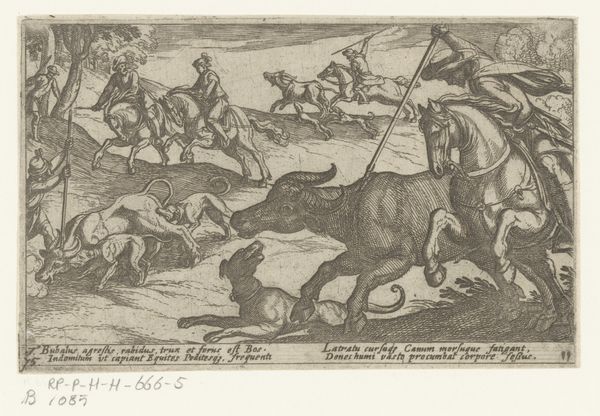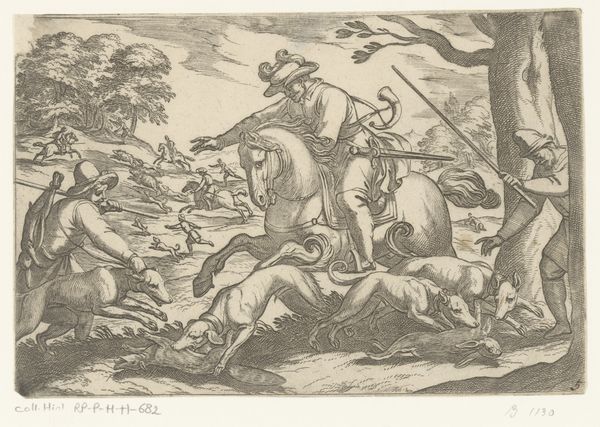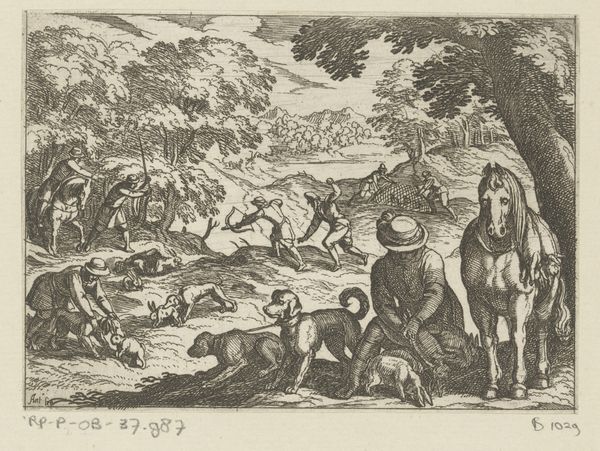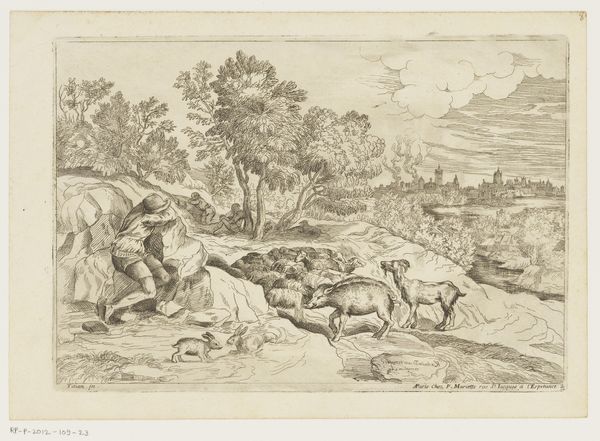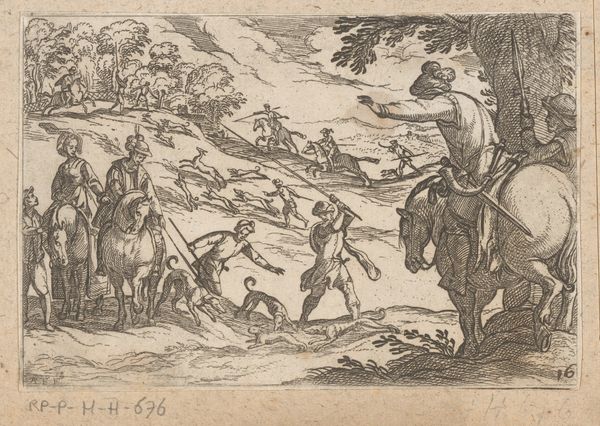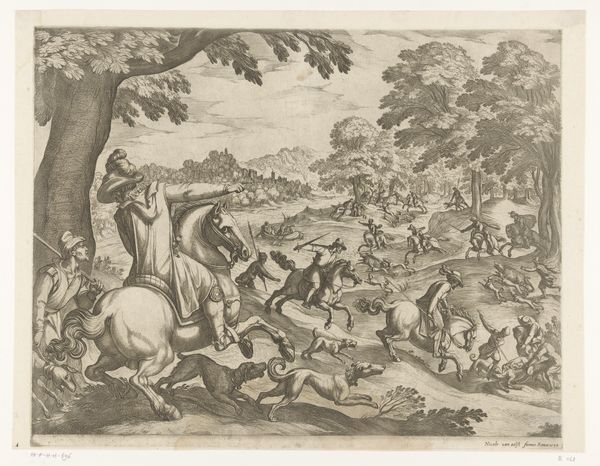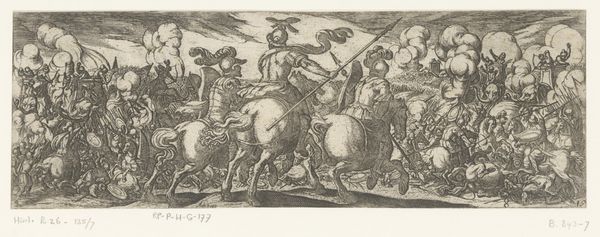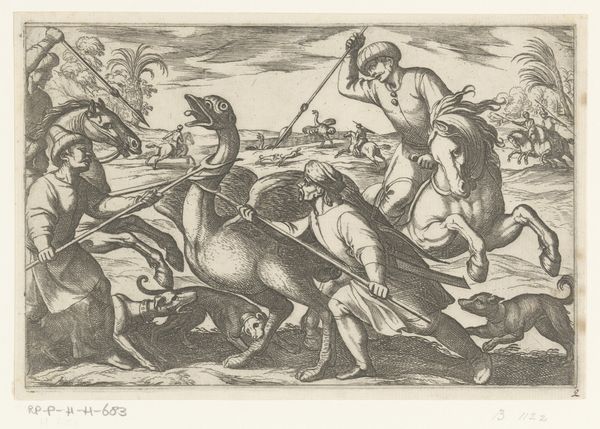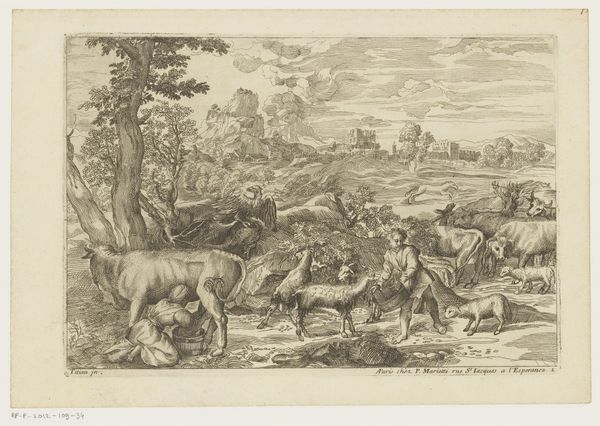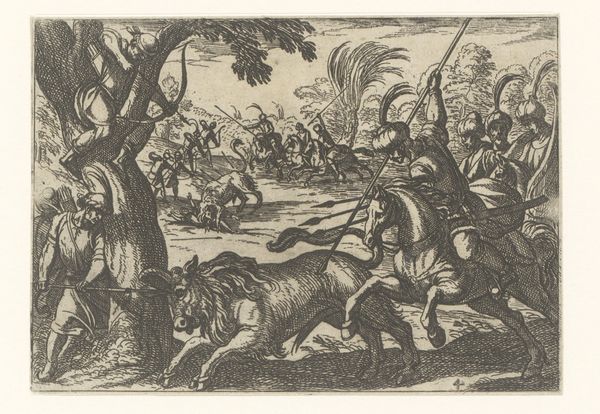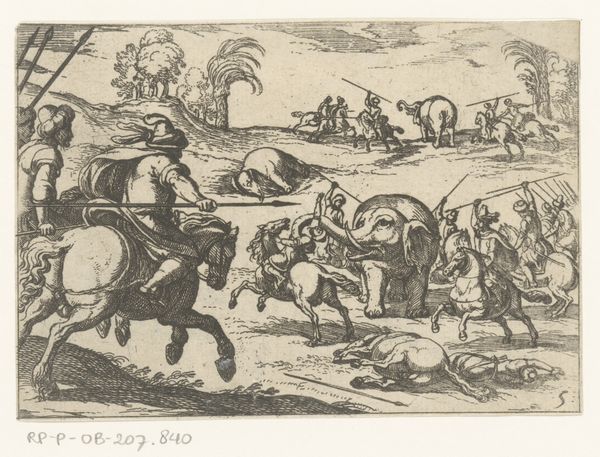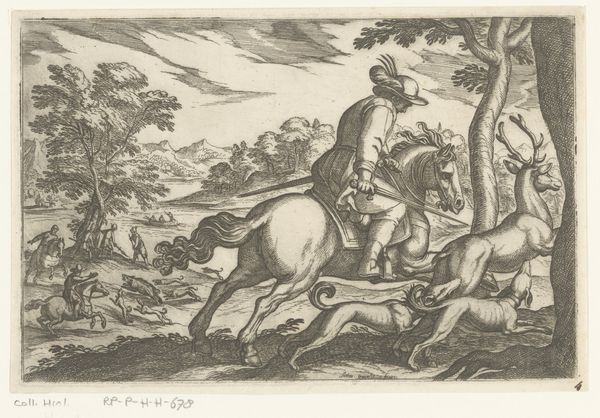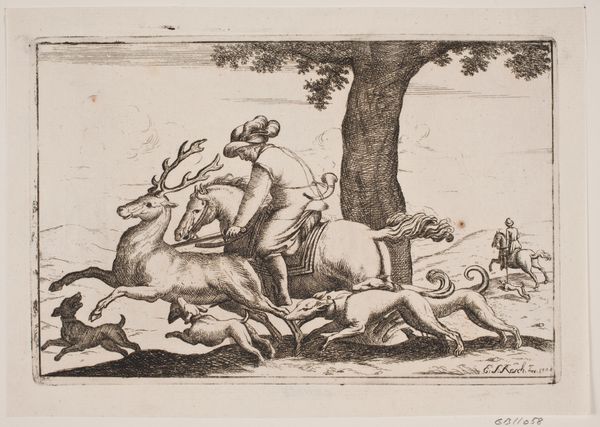
drawing, print, etching, paper, ink, engraving
#
drawing
# print
#
etching
#
old engraving style
#
landscape
#
mannerism
#
paper
#
ink
#
genre-painting
#
history-painting
#
engraving
Dimensions: height 133 mm, width 200 mm
Copyright: Rijks Museum: Open Domain
Curator: What a striking print! We are looking at Antonio Tempesta’s “Hunting Deer with Falcons,” made around 1595. It's an etching and engraving in ink on paper, and what grabs me first is how dramatic the scene feels despite its small scale. Editor: Dramatic is right! It's like a snapshot of brutality, romanticized with that rolling landscape in the background. You have the noble hunters, their horses, and trained animals engaged in a frantic chase of stags. Curator: Indeed. It is hard to separate out any notion of aristocratic activity from the realities of the hunt. And this frantic chase embodies both the prowess and the cruelty associated with hunting culture, deeply woven into societal power structures. This print also calls back to falconry, a symbol of status in the Renaissance, but here, there seems to be also an anxiety and nervousness of Mannerism about this. Editor: Ah, you picked up on the Mannerist touch, I see! I suppose you’re noting how the animals appear elongated? Curator: And, the human figures look oddly proportioned, stiff and posed, despite being in motion. It all contributes to that underlying feeling of instability that defines much of Mannerist art. One could say, how symbolic that it's enacted in a staged hunt. How like politics this whole affair plays out. Editor: This definitely reads like a performance of power. Tempesta likely created this to appeal to a wealthy clientele, reinforcing the visual narratives that upheld their dominance, no? It’s not just about depicting a hunt, it's about validating a social hierarchy. Curator: Certainly. There’s that element of aspiration present, too. These prints circulated widely. They offered visual access, a sort of participation by proxy, to rituals of aristocratic life, thereby cementing cultural values of privilege. But also... that hawk, perched so calmly—an ancient symbol of control and foresight, the ruler’s eye on the kingdom…it's all intentional. Editor: I can almost imagine potential buyers seeing this piece in a shop window. And you are right about the hawk. Such prints allowed wider society to mirror the cultural elites, whether it was fashion, leisure, or the thrill of the chase. These prints sold aspirations as well as a good story. Curator: Considering how easily prints moved around then, it would be fascinating to follow its audience and re-recreate its full social life. Editor: An intriguing idea. This work is not merely an image. But it shows a lens into 16th-century societal practices. Thank you for lending your lens, too. Curator: A fascinating lens it is indeed! Thank you for this enlightening dive.
Comments
No comments
Be the first to comment and join the conversation on the ultimate creative platform.
